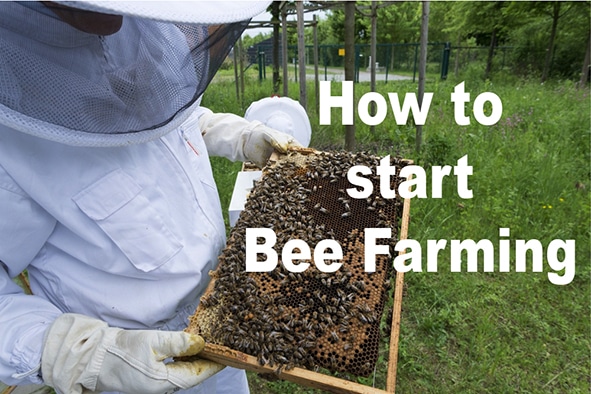What is bee farming ?
Bee Farming is the practice of maintaining honey bee colonies in beehives, it is called bee-keeping or apiculture. Bee farms also known as Apiaries are established for the commercial production of honey. Bee-keeping has been cheap and popular agricultural enterprise.
What is the importance of a bee?
Bees are the greatest pollinators
These have been part of the biodiversity on which we all depend for our survival. They have provided high-quality food—honey, royal jelly and pollen — and other products such as beeswax, propolis and honey bee venom.
Without bees we would have
- No more honey
- Many fruits and vegetables could not grow
- No more dairy
- Malnutrition
- No more cotton
- Our diets would change
- Humans would become forced to be pollinators
- Cost of food would skyrocket
How to Start Commercial Bee Farming or Keeping
Apiculture, Bee keeping or Bee farming has been brought about for several purposes which includes production of honey for own consumption, or for commercial purposes. With the current technology and modern bee-keeping methods, it is easy to produce honey today than it was years before. With bee farming going commercial, a farmer must prepare correctly
What are the starter requirements needed?
You will need a strong, durable beehive to house your bees that will also protect them from predators and harsh weather. The common beehives are Langstroth, the Warre, the Top Bar and the Traditional logo hive. The traditional log hive are made from local materials such as hollowed-out logs, bark formed into a cylinder, clay pots, woven grass or cane – whatever is suitable and available. The sole purpose of the hive is to encourage bees to nest in a place accessible to the beekeeper
The best hive should be easy to maintain, have a simple design of the top covers and supers, have ample space between brood chambers and supers, removable frames for easy hive inspection and a hive stand. For these reasons, the Langstroth hive is the most preferred for commercial purposes.
- A pair of gloves is another apparatus you need, preferably one made of leather but very flexible to use.
- Bee wax is also necessary for the colony to occupy. Look for a smoker that burns for longer periods, preserves fuel and has a nozzle that will perfectly guide the smoke accurately.
- An uncapping fork is effective for removing comb caps without damaging the comb. During hive inspection, a bee brush with soft thistles is of great help to clear bees from the comb without making them aggressive.
- Of great importance too is the hive tool to aid you move frames and clean propolis.
- A bee suit is also a must-have. This should include the head veil to offer you maximum protection from bee stings. Be careful when putting on the bee suit. It should always be worn over or on top of a pair of gumboots; if you tuck in the suit into your gumboots, bees will sting you. When you harvest honey, you will need a clean honey extractor and a sieve.
What is the best location to keep your hives?
Once you have all acquires all the above gadgets, you need to set up your apiary. It is important to look for a place that is less disturbed, far from noise or human activities. This should be well-drained lest the bees abscond due to high humidity. Avoid fields frequently sprayed with chemical pesticides to reduce bee poisoning and honey contamination; thus, if a must, use bee friendly pesticides.
The apiary should also be close to water and nectar sources. Set the hives under trees or away from direct sunlight, flooded places or areas with strong winds. If your site is exposed, erect a small shade above the hives. Leave enough space – 1.2-1.5m – to give you a working area. Where space is limited, pair up the hives.
Place all the hives at a height that you will find comfortable to work. If placed on wooden stands or wire suspensions, paint the stands and wires using used oil to drive away crawling ants. If resources allow, fence your apiary to protect it from vandals and predators like honey badgers, humans and monkeys.
You can also read more on How to Grow Cabbages and How to Grow Black Beans
We would love to hear from you on any other topics you want us to cover by commenting below. Than you.

